The 122nd Annual Christmas Bird Count 2022
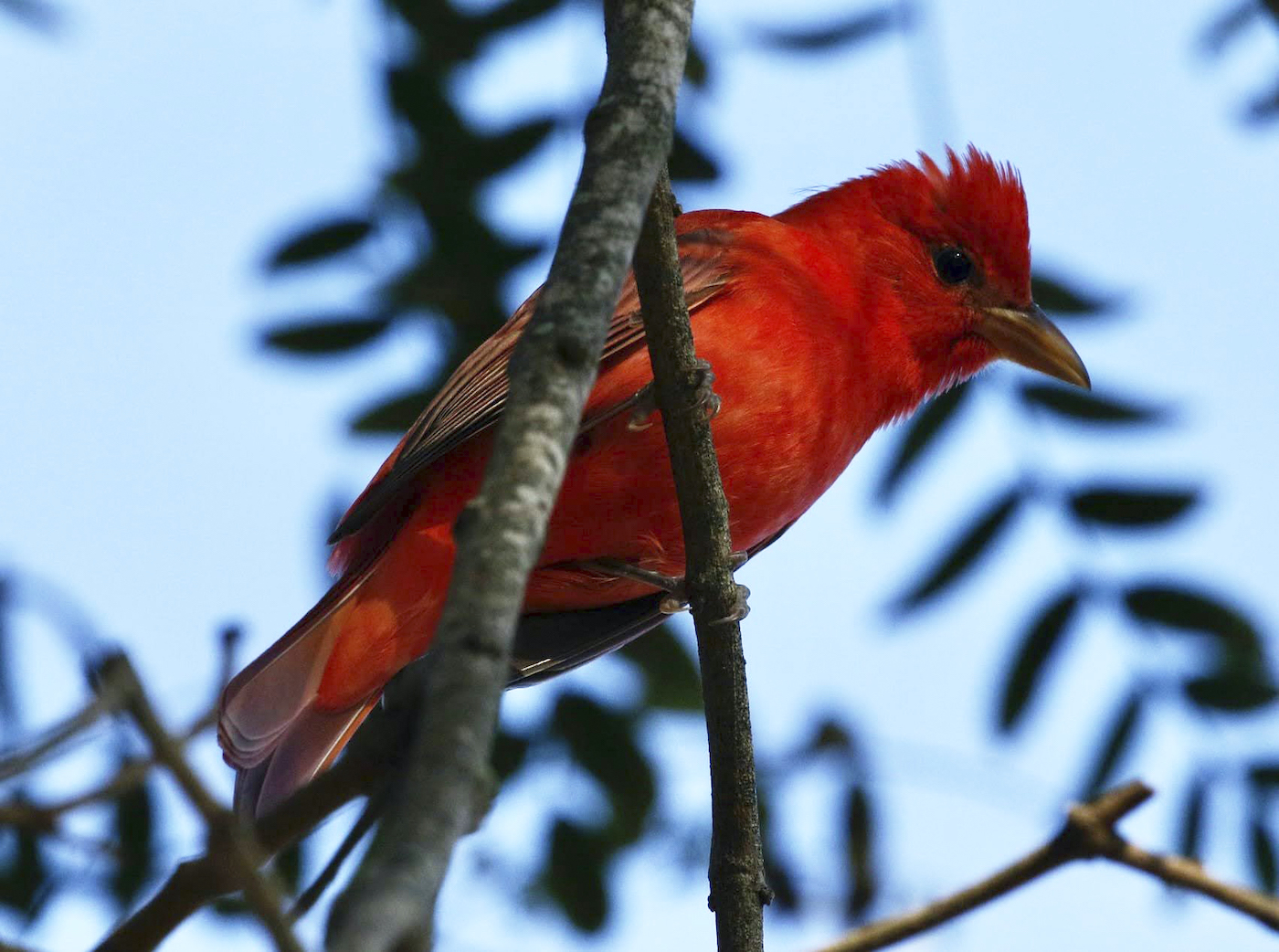
Our beloved annual Christmas Bird Count (CBC) was held on Saturday, January 1, with over 200 volunteers ringing in New Year’s Day by counting our area’s birds for the Santa Barbara Audubon’s submission to the National Audubon data bank. Although it was a sunny and normal cold temperature for the count, the head birders shared that the few weeks of rain in December may have caused a decrease in the bird count over the region. Data was submitted and compiled via the eBird phone app and forms at a January 6 zoom meeting headed by Janice Levasheff, board president of the Santa Barbara Audubon Society, with head coordinator-compiler Liz Muraoka for North Goleta, and her team leaders Joan Murdoch and Joan Lentz in South Santa Barbara and Montecito, Libby Patten in North Santa Barbara, Dave Compton in South Goleta, Wim van Dam in the mountain areas, Master compiler of species lists and mapping Glenn Kincaid, and Bill Pollock, who compiled the legacy species spreadsheet. Sea birds were counted by Curtis Marantz and Wes Fritz offshore for several hours in Alex and Monica Broumand’s boat, arranged by Ron Hirst. Only three people volunteered to count birds at night.
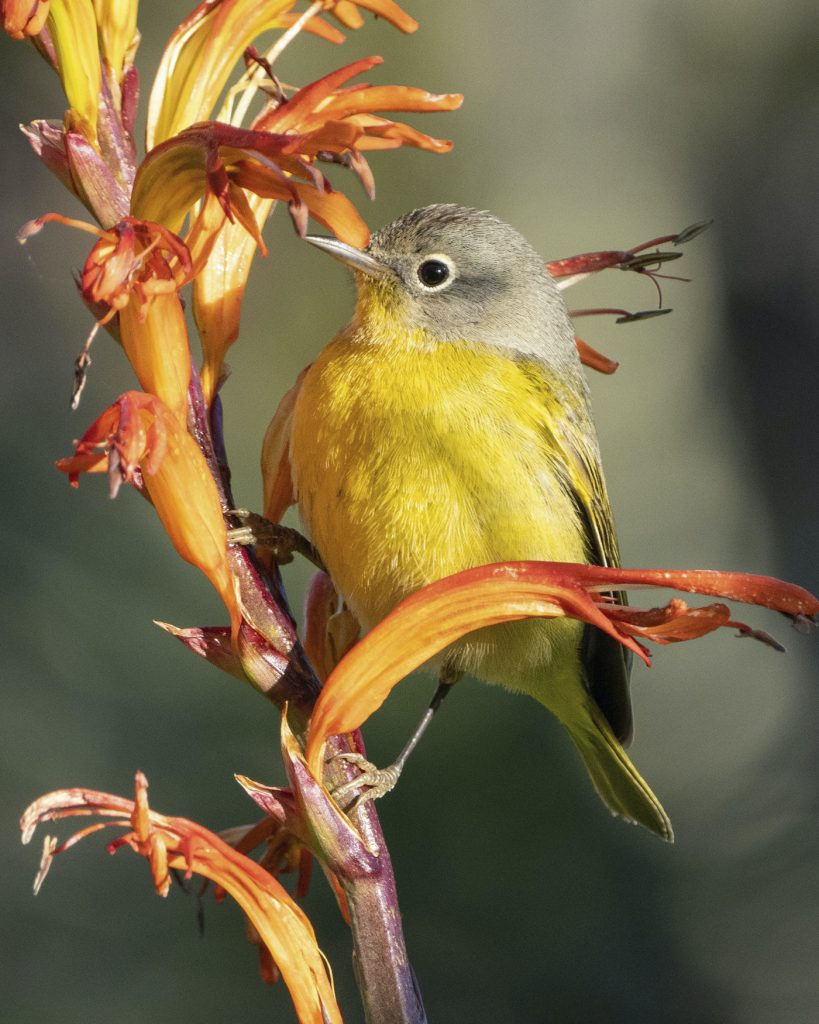
Out of town volunteers were Jamie Chavez at the Santa Barbara Cemetery, the Music Academy of the West, and the Bird Refuge; Mary and Nick Freeman for owl counts; Paul Keller at Goleta Beach; Don Pendleton at East Beach and Chase Palm Park; and Robb Hamilton at Hope Ranch and La Cumbre Country Club. The CBC photographers were Hugh Ranson, Steve Colwell, Sophie Cameron, Mark Bright, Mark Holmgren, and Robb Hamilton.
The top five unique bird species found this year were the extremely rare Warbling Vireo for the 9th year in a row, the Short-Eared Owl, Painted Redstart, Plumbeous Vireo, and the Green-tailed Towhee.
As of the date of this report, they have counted 194 species, down from 206 last year. Muraoka invites us to continue counting and submit our data: “Overall numbers of birds and bird species were low this year, which may have been affected by cold weather, recent storms, loss of habitat, and ongoing drought, but where did they go? We ask the community to report on new areas within the count circle that currently are not well covered. It could be a small neighborhood park, a recently restored open space, a newly constructed pedestrian/bike path, or a downtown parking lot with winter flowering trees. Report your findings to eBird or the local online birding discussion group, SBCOBIRDING. And we invite everyone to the Great Backyard Bird Count February 18-21(see end of column for information).”
The Santa Barbara/Montecito count area covers a 15-mile diameter count circle, centered at Hwy 154 and Foothill Road, Santa Barbara. Approximate count circle boundaries are: San Ysidro Road on the east, Paradise Road on the north, Coronado Drive on the west, five miles offshore on the south by boat. The count includes sea birding onboard a boat, as well as night birding with volunteers trained in each type of area.
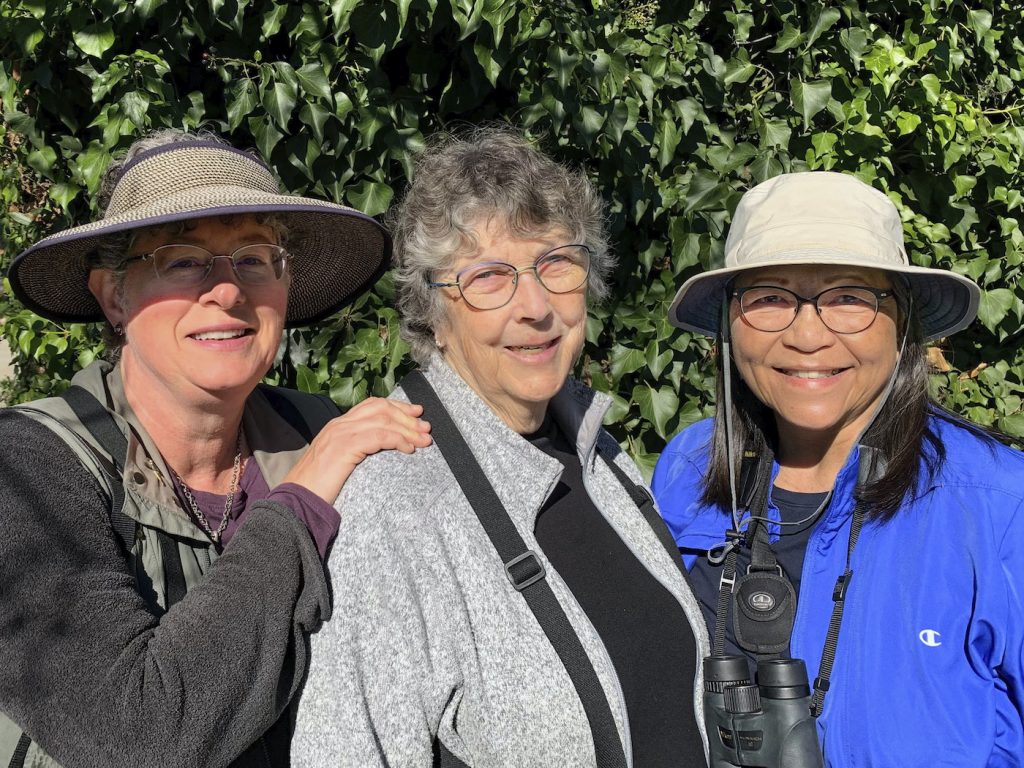
Heads of the Christmas Bird Count Libby Patten, Joan Murdoch, and Liz Muraoka on count day (photo courtesy of Muraoka) 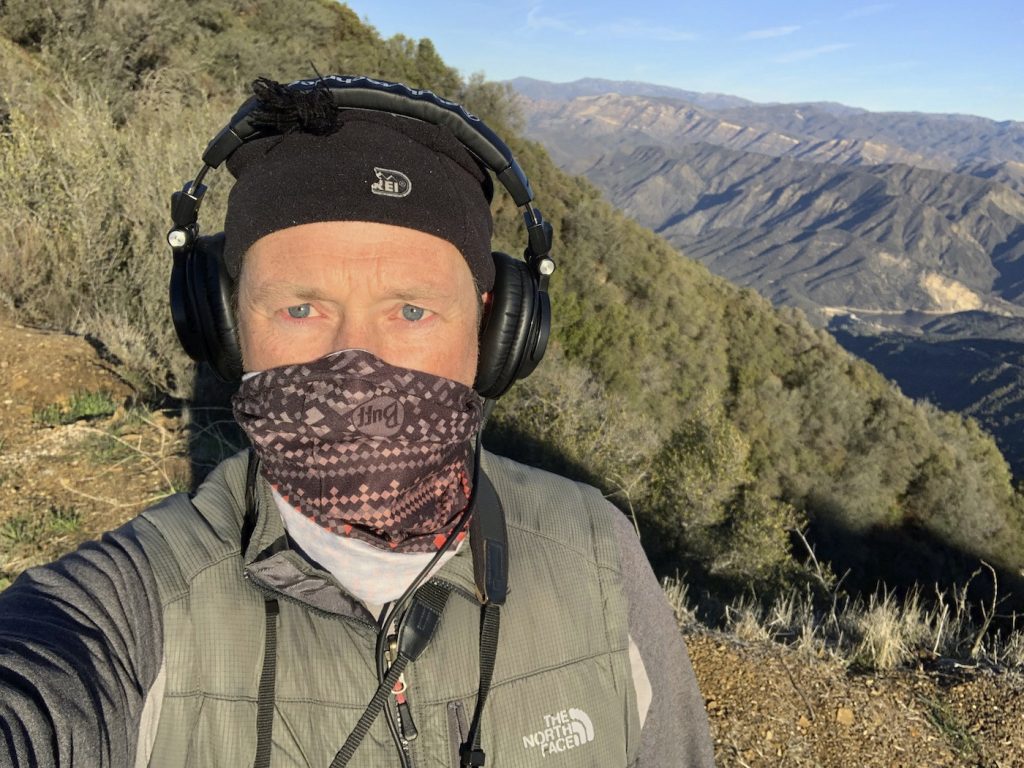
Mountain area bird counter Wim Van Dam on count day (photo courtesy of Van Dam)
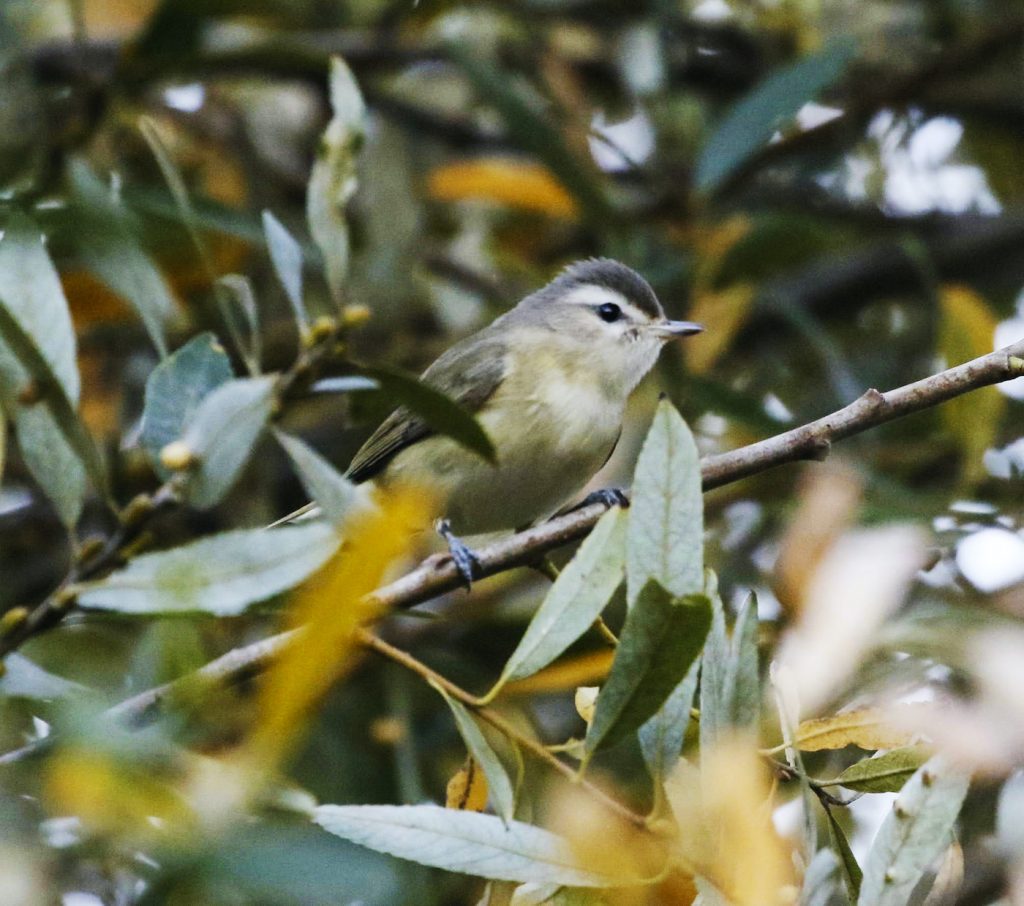
Warbling Vireo, an extremely rare bird species to the area (photo credit: Hugh Ranson) 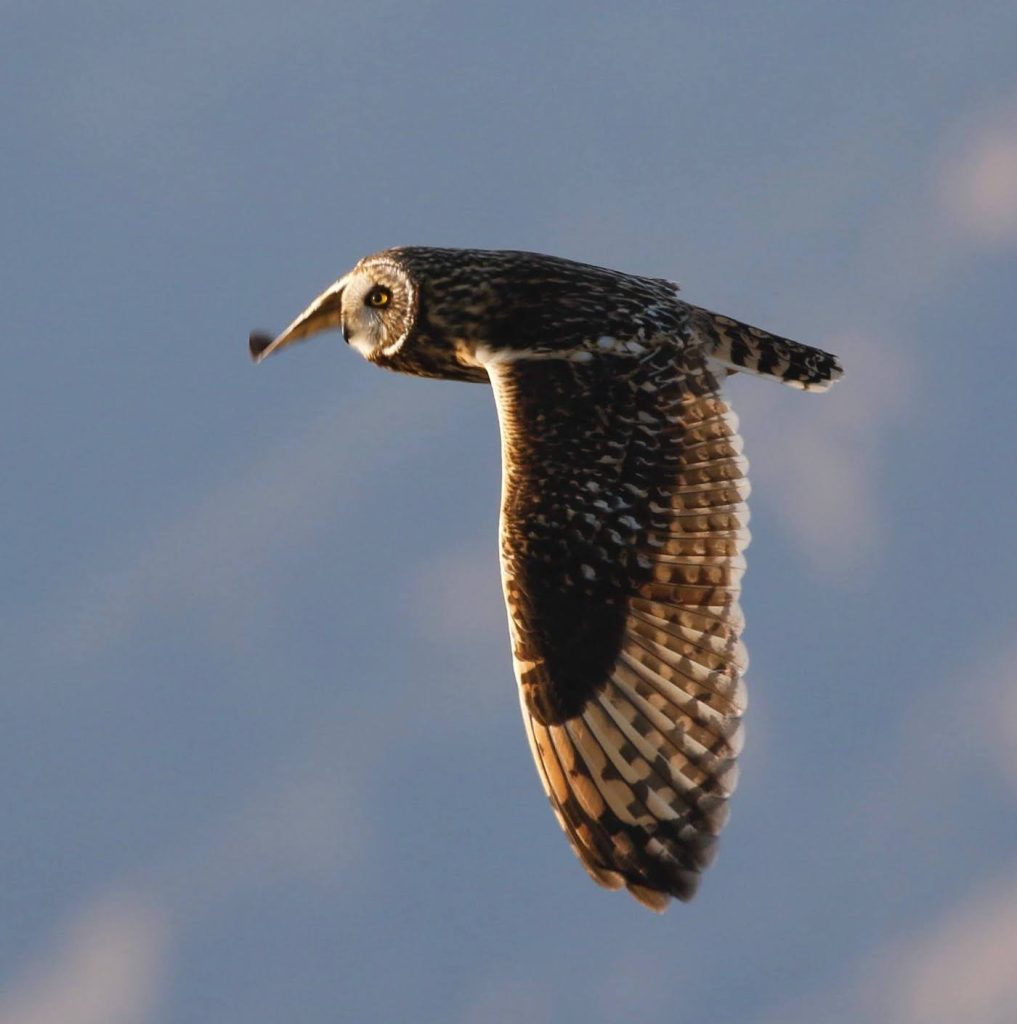
Short-Eared Owl in flight (photo credit: Hugh Ranson)
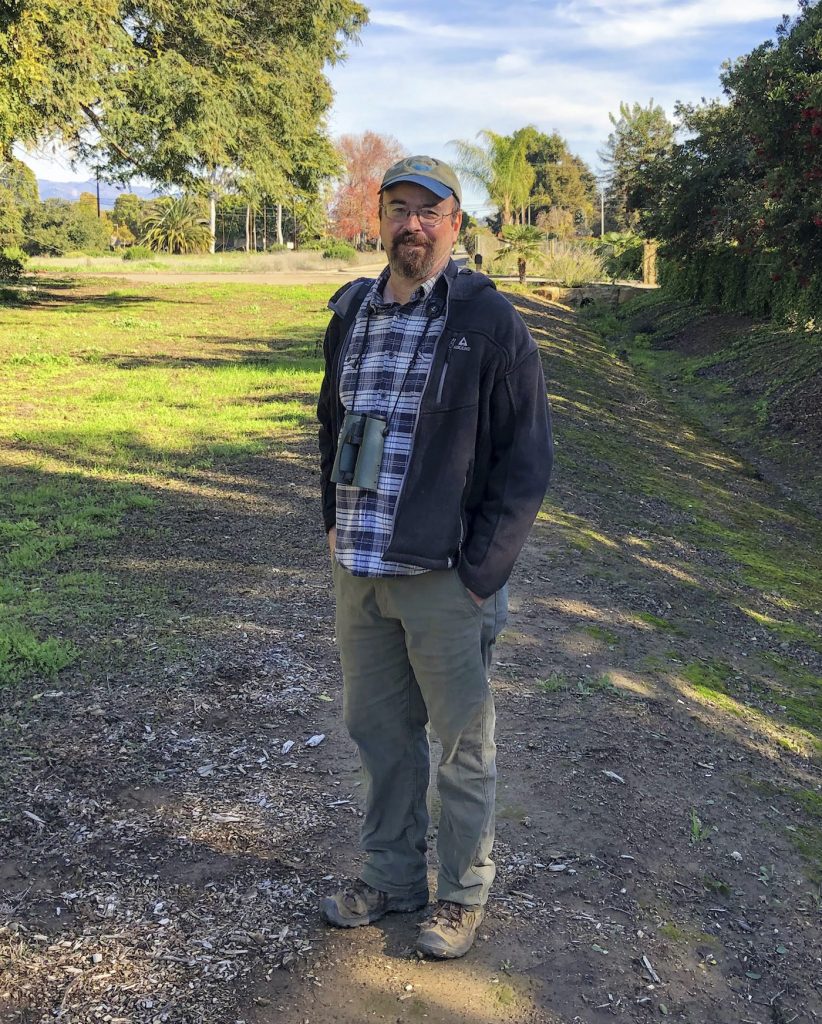
Team leader of the South Goleta bird count, Dave Compton (photo courtesy of Compton) 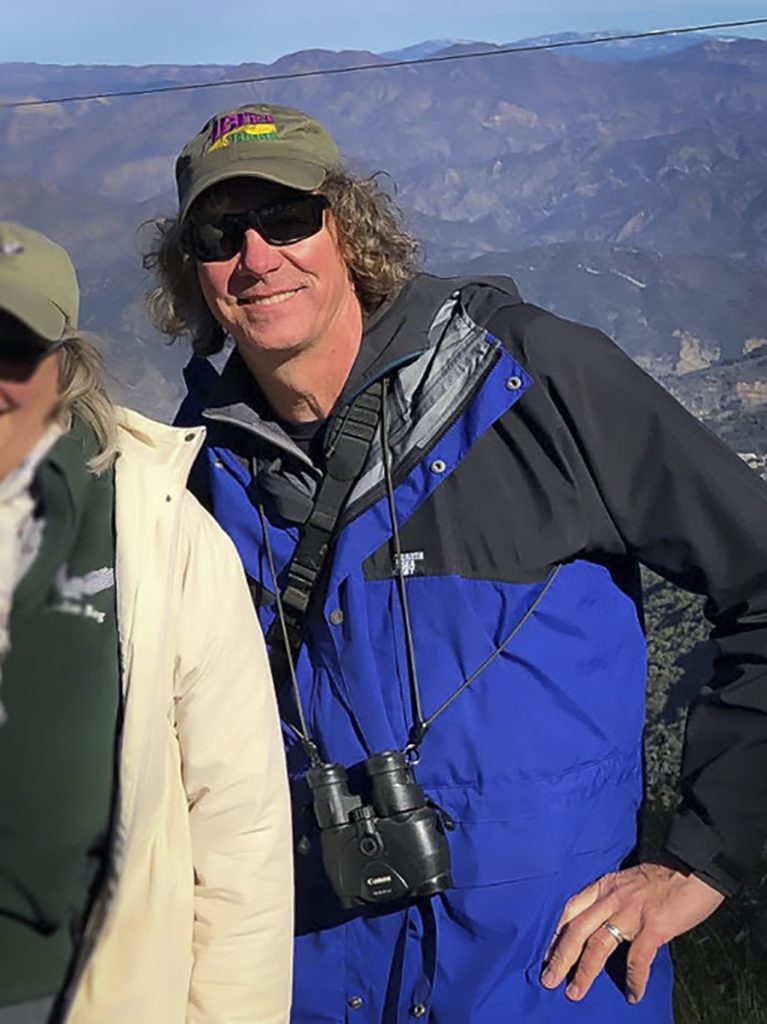
Master compiler of species on bird count day, Glenn Kincaid (photo courtesy of Kincaid)
To talk about birds’ impact world-wide, I reached out to Katherine Emery PhD, executive director of the Santa Barbara Audubon Society, and Levasheff for their expertise.
They shared the following statement for our readers:
“Among other feats, birds are important because they disperse seeds, pollinate plants, control pests, save trees, clean up carrion, and balance the ecosystem. They provide hours of joy when you are glancing out your window at your bird feeder or studiously counting species during a 24-hour bird sit. The CBC protects birds by bringing many people together to collect important long-term local avifauna data. Studying birds collectively, we increase community environmental stewardship. It is important to note that nearly three billion North American birds have disappeared since 1970 (K. V. Rosenberg et al. 2019). Ways that we can protect local and migrating birds and local habitats include:
-Learning about birds and their habitats with friends on bird walks and at the Christmas Bird Count.
-Observing birds in backyards and at local Santa Barbara area open spaces.
-Maintaining clean feeders and birdbaths.
– Using native plants in gardens.
-Enjoying cats indoors and walks with dogs on-leash.
-Helping to maintain our area’s richly diverse habitats that support birds.
-Writing letters and speaking out to promote protection of birds and their habitats.”
411:
www.santabarbaraaudubon.org
https://santabarbaraaudubon.org/learning-re sources
Joanne is a professional international photographer and journalist. Contact her at: artraks@yahoo.com





